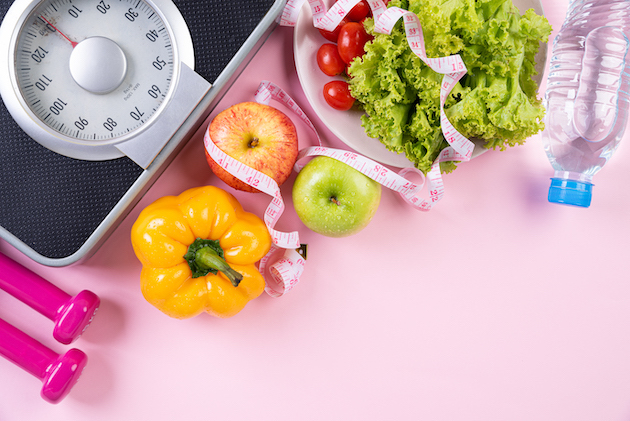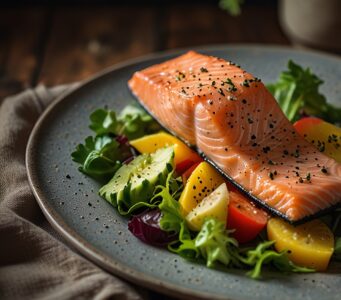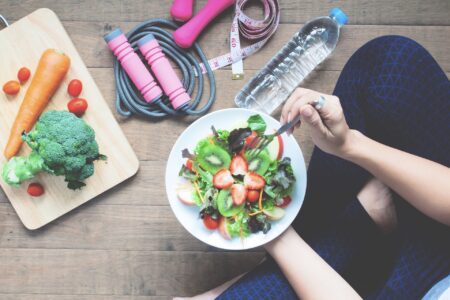Now, it has been scientifically confirmed once again that the average Estonian's diet contains too little fiber. Fiber is vital for our bodies. It gives a feeling of fullness without excess calories, slows down digestion, reduces emotional stress, and lowers cholesterol levels and blood pressure.
Namely, he did Food and Fermentation Technology Development Center (TFTAK) in cooperation Institute for Health Development (IHD) and Department of Chemistry and Biotechnology, Tallinn University of Technology with scientists from the microbiomes research group study, which was attended by 59 Estonians who did not have significant health problems.
The subjects were divided into two groups, high-fiber dieters (more than 15.1 g/1000 kcal) and low-fiber dieters (less than 9.4 g/1000 kcal). It is worth recalling here that our national dietary recommendation has at least 13 g of fiber per 1000 kcal per day. This is the daily fiber requirement for an adult.
High- and low-fiber dieters have different microbiomes. The types of bacteria indicate the main sources of fiber and vice versa. The high-fiber group consumed more whole grains, including oats, fruits, berries, vegetables, and root vegetables. The low-fiber group consumed more refined grain products, such as bread, animal products, and sweets.
The abundance of fiber and the diversity of intestinal bacteria make you slim.
So is there a difference in what bacteria are in the gut and how many of them are there? As it turns out, there is. And a pretty big difference. The study in question also looked at the differences in body mass index (BMI) between both groups, and it turned out that people who ate a high-fiber diet had a lower BMI on average than the group who ate meat and bread. Other studies have also shown that a low-fiber diet is associated with overweight and the activation of inflammatory processes.
In addition to the amount of fiber, its diversity is also important. Fiber diversity also ensures the diversity of the gut microbiome. Long-term research conducted on identical twins shows that a poorer bacterial community in the gut is associated with overweight.
Sources of fiber or foods rich in fiber
Where do you get the right fiber? Who among us would weigh how many grams of this type of fiber there are in this food and how many grams of that type of fiber there are in that food? It's much easier to eat as many different fiber-rich foods as possible every day.
The most diverse and accessible sources of fiber are vegetables, i.e. fruits, berries, vegetables, including legumes and root vegetables. They should be eaten daily at a minimum of 0.5 kg, but ideally about 1 kg, varying them by color as much as possible. It is best if you manage to eat vegetables in all the colors of the rainbow every day. If you manage to get high-quality whole grains along with vegetables, you will have the necessary set of fiber.
But who can eat half a kilo of vegetables a day? That's a lot. As you can see from the study in question, some of the 59 test subjects did. True, if you have been consuming them more like the average Estonian, 200-300 grams a day or even less, then without a serious change in your eating habits and food preferences, it will be difficult to consistently reach this amount. Eating an apple or pear as a snack may help a little, but in the long run it won't make much difference.
More fruit for breakfast
The first recommendation is to eat more fruit for breakfast. With the rise of high-fat diets, there are many fears and horror stories about fruit. There is no need to be afraid of fruit. Fruit does not cause your blood sugar to fluctuate and does not cause fatty liver.
Eat 5-6 pieces of fruit for breakfast along with a handful of different nuts and seeds (grind if necessary) and you'll have started your day well. If there's room left, you can also add some porridge. For example, whole-grain karavelve is a readily available and healthy porridge ingredient, but nothing bad will happen if you only eat fruit and nuts for breakfast.
Add vegetables to the menu
Next, you should look at lunch and dinner. Hopefully, you've eaten 400-500g of vegetables in the form of fruit after breakfast, so if you get an additional 400-500g of vegetables in the form of different colored vegetables and roots, you don't have to worry about your gut bacteria starving and your BMI going crazy.
If you're thinking that there's no problem, we're a nation whose national food is potatoes, then don't be too excited. Despite the fact that potatoes are a valuable healthy vegetable, they don't count in this calculation. And to be fair to potatoes, sweet potatoes are also on the bench. Not that you shouldn't eat them at all. Just eat them after you've finished your other vegetable servings.
Start eating vegetables
Here comes the next recommendation. Always start eating vegetables, except (potatoes and sweet potatoes), and make sure that you have at least half of the food in the corresponding meal proportionally, the so-called plate rule. The more vegetables you can eat raw, the better, but cooked vegetables also count. There are actually many different recipes, so you definitely don't have to limit yourself to just stewing the vegetables that children hate. There are many more delicious ways to introduce vegetables.
There are several advantages to starting with vegetables. Since vegetables are generally low in energy density and high in fiber, starting your meal with vegetables will ensure you get your fiber and leave less room for other, higher-energy-dense and perhaps less healthy foods later on.
Green salads and beans
I also recommend that you make sure that your diet includes at least 75 g of green leafy vegetables and 100 g of legumes (various beans, lentils and chickpeas) every day. By beans, I mean those that should be eaten without the pod and cooked, not kidney beans, which are more likely to be included in the general vegetable count. You can mix them together in one salad or eat them at different meals, the important thing is that you eat them every day.
About eating salad I've already written about legumes, and they're simply good sources of protein and fiber that keep you full for longer, so you might be less tempted to snack between meals.
As we can see, various studies show that the average Estonian continues to eat too little fiber. This in turn increases the risk of obesity and chronic inflammation, which in turn leads to heart disease and other lifestyle diseases. In order to add more of this necessary fiber to your diet, you don't need to go to the pharmacy's supplement counter.
By making fruit the centerpiece of your breakfast, eating a generous bowl of raw green salad a day, and adding forgotten legumes and nuts to your daily menu, you can get your fiber intake relatively easily, keep your gut bacteria happy, and keep your weight under control. As a bonus, you'll also lower inflammation levels in your body, which slows down the aging process.

Allan Randlepp
NutritionistAllan is a nutritionist and trainer whose favorite topics are lifestyle and longevity, including nutrition and physical activity.
Nutritional counseling





